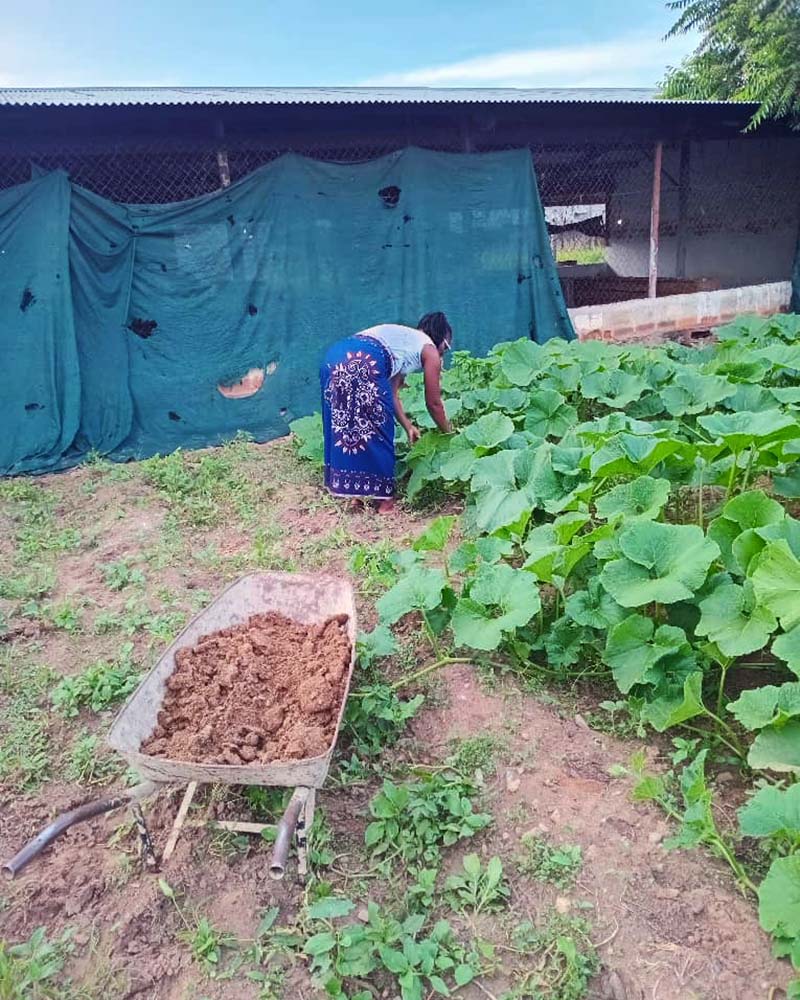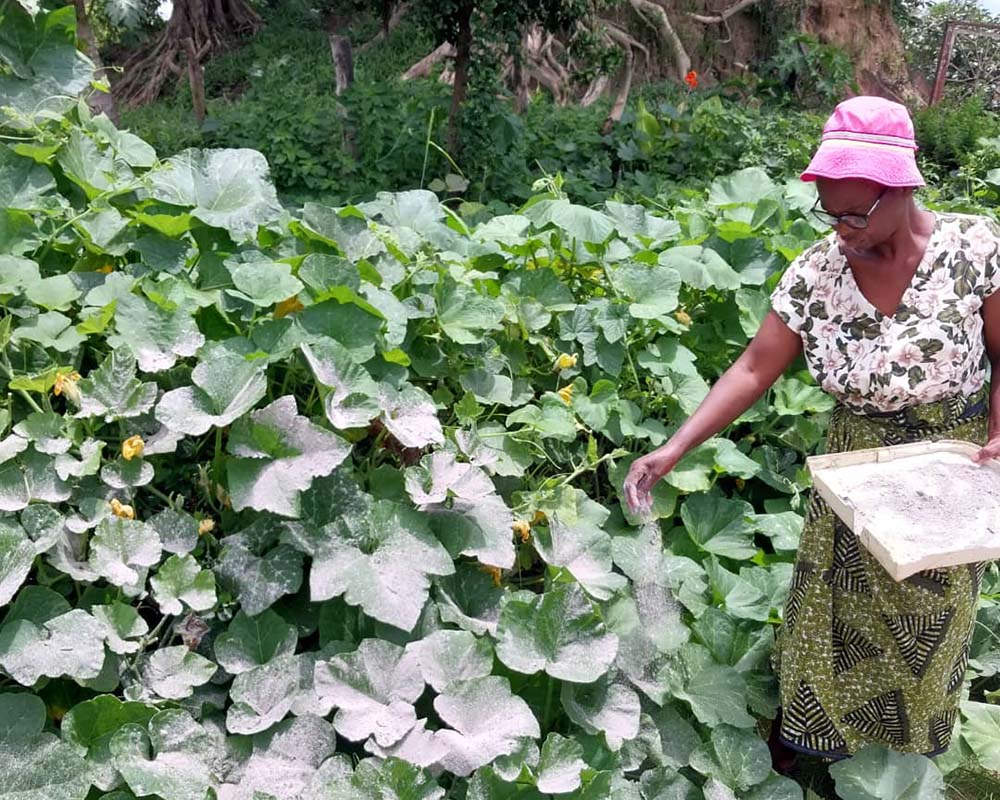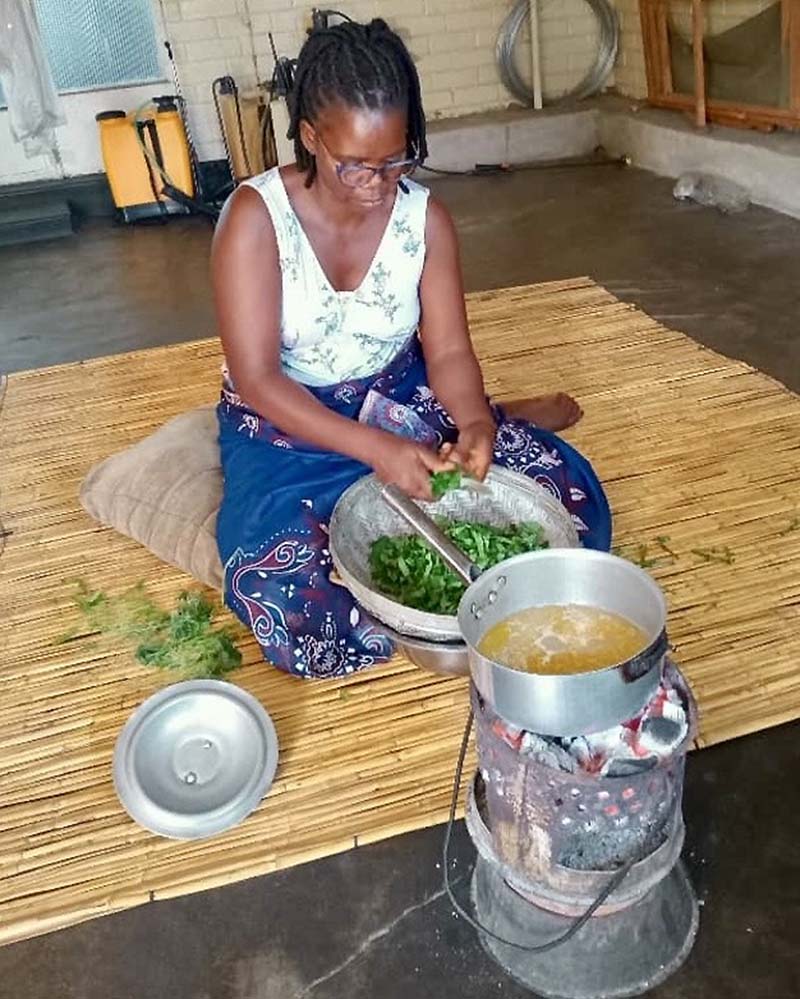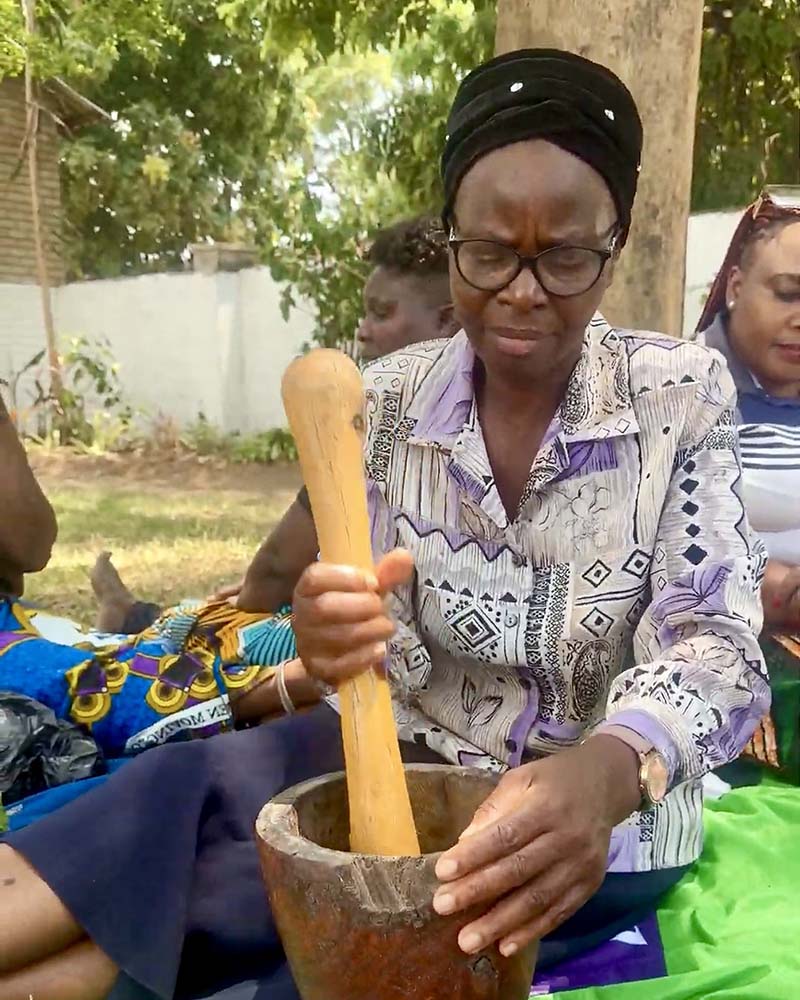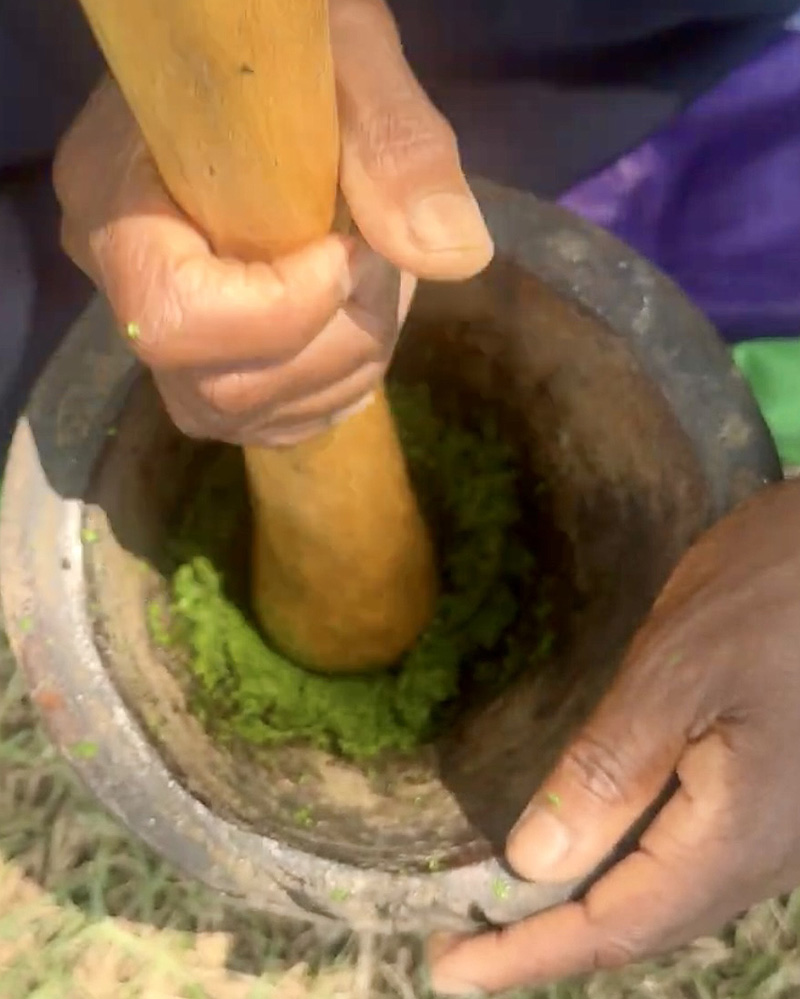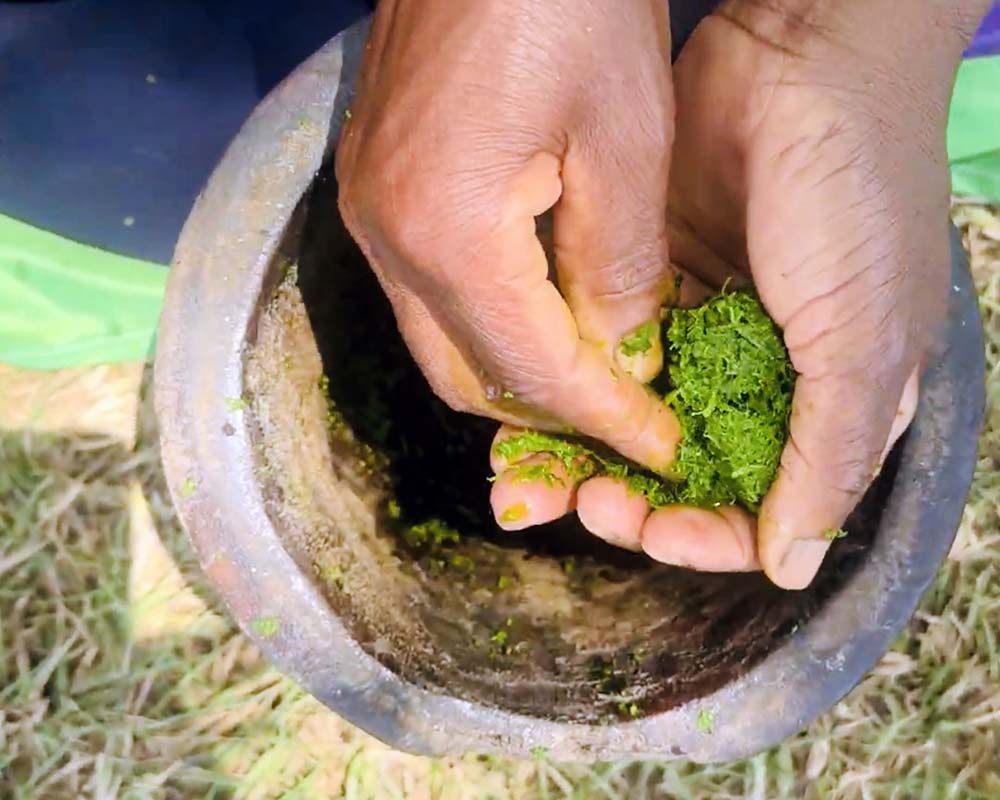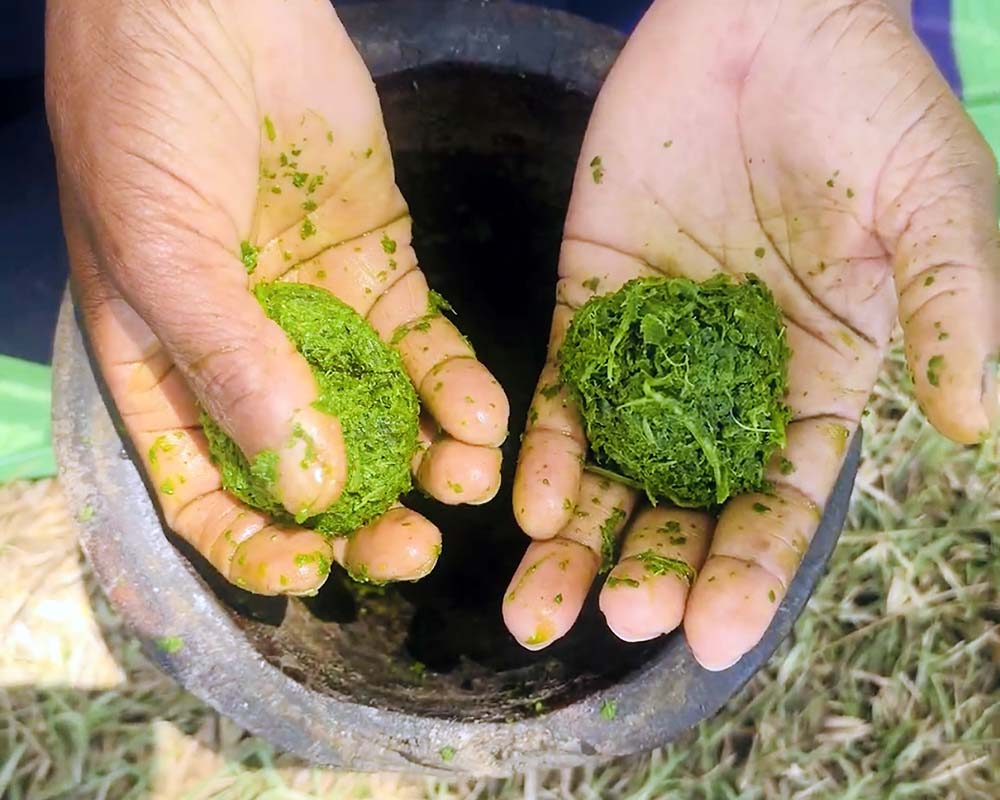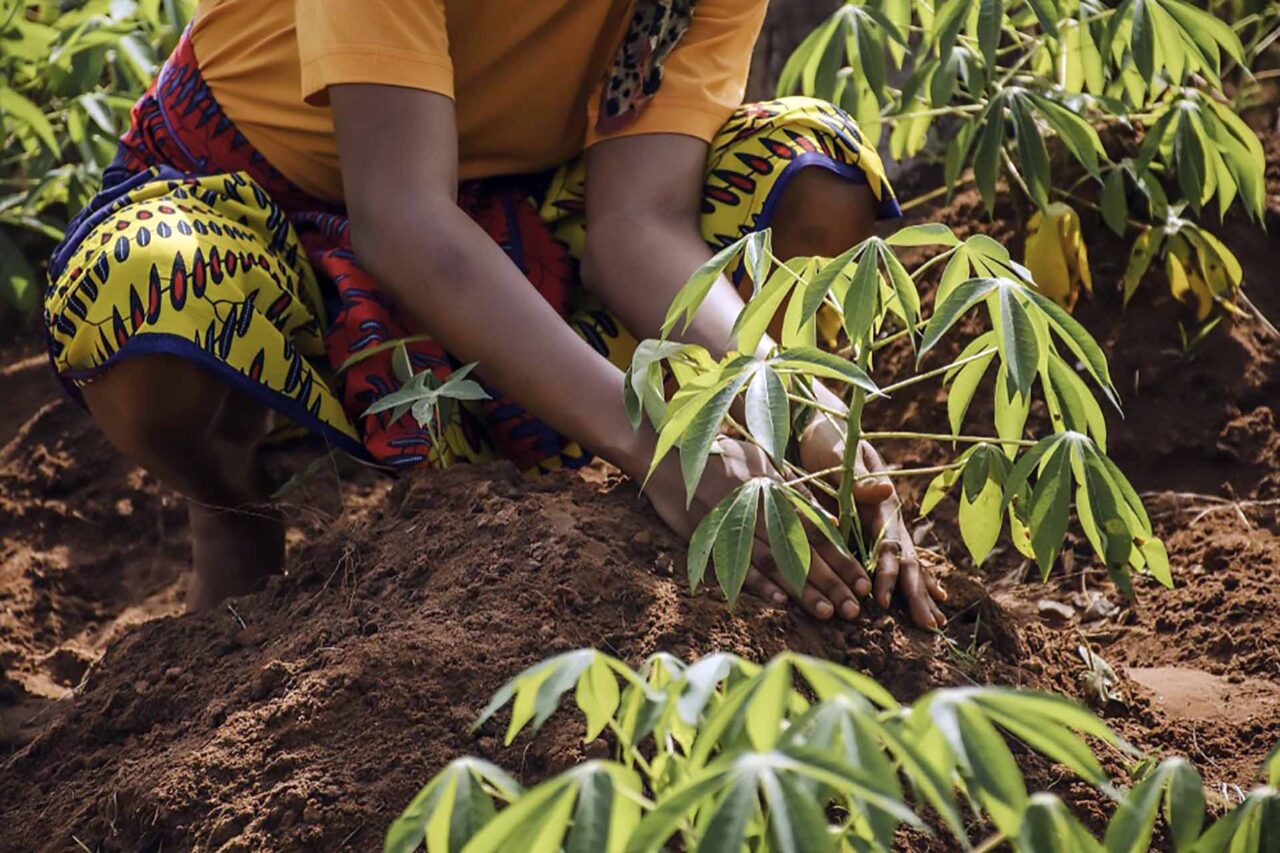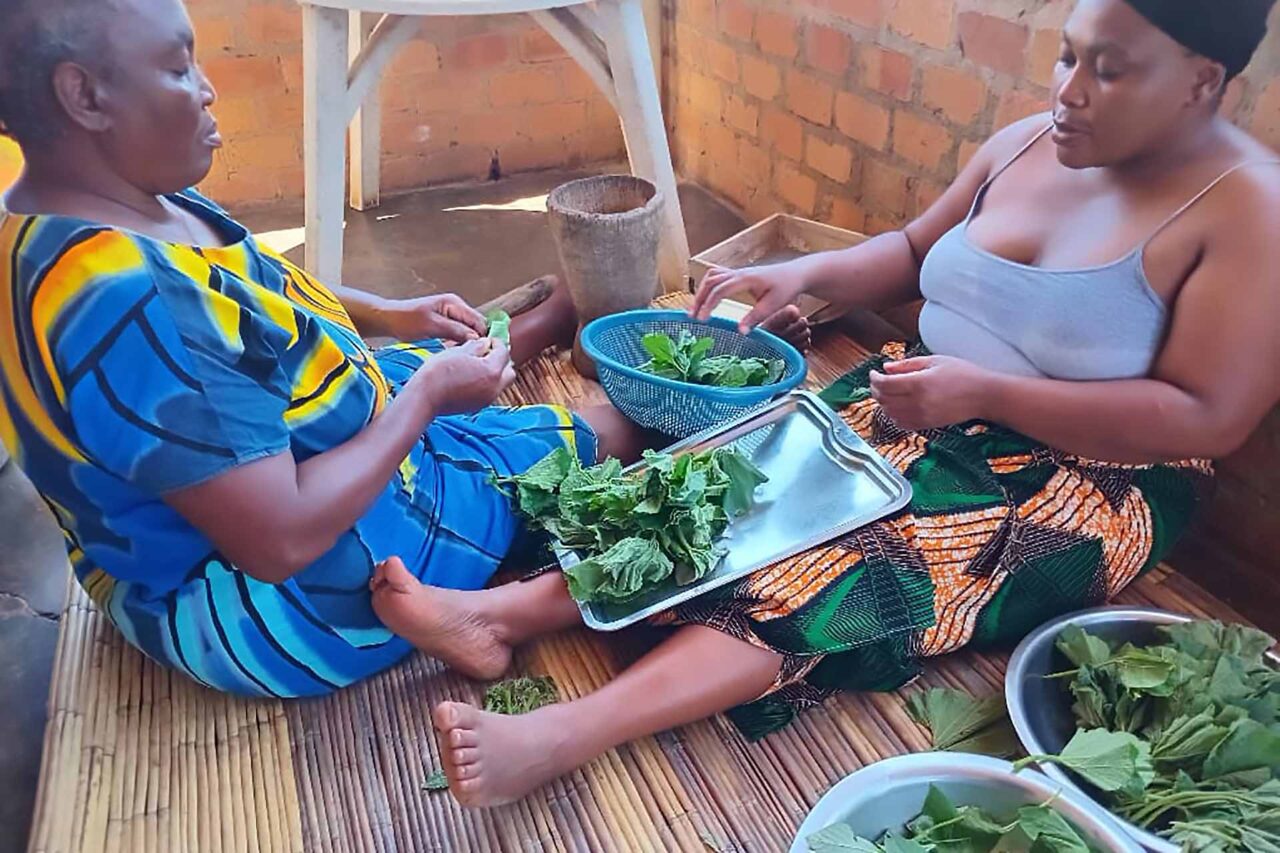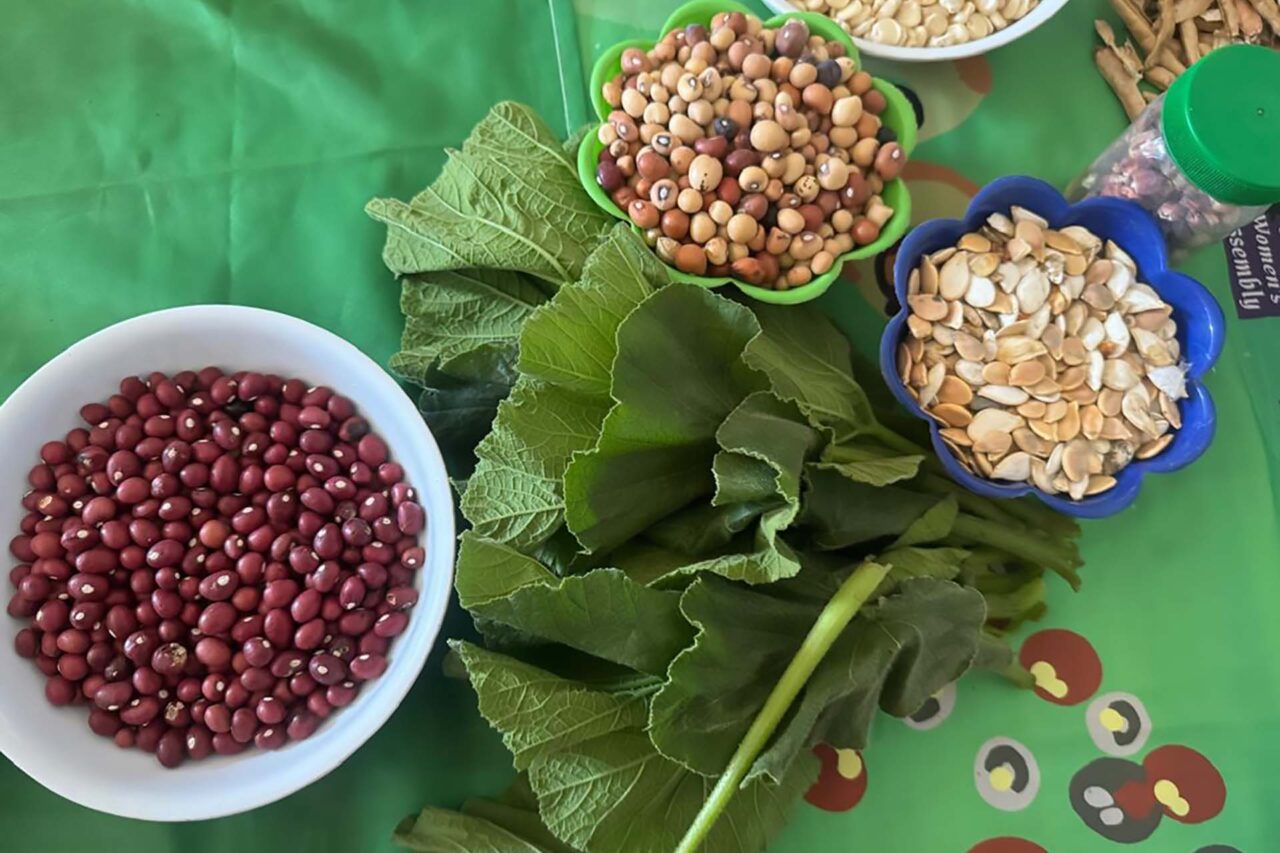The NAFI project, located in Zambia's Copperbelt Province, is part of the African Women's Collaborative for Healthy Food Systems. Its mission is to raise awareness and promote the consumption of nutritious African foods while documenting the nutritional and cultural significance of locally grown foods cultivated through agroecological practices.
The project involves six farmers from the districts of Chingola, Lufwanyama, Luanshya, and Ndola. The Rural Women’s Assembly (RWA) plays a key role in advocating for indigenous seeds, food sovereignty and sustainable farming practices among rural women.
Zambia
The Life Cycle of a Pumpkin
From Seed to Harvest
The NAFI Project
Empowering Zambian Women in Food Sovereignty & Agroecology
The Life Cycle of a Pumpkin
From Seed to Harvest
This theme traces the journey of a pumpkin from seed to harvest, highlighting the growth stages and the nurturing process. It features the experiences of Theresa Mutaka, Dorothy Mugala, Janet Chongo, Anthea Mulenga, Noreen Chibundi, and Kunda Nachizya, sharing their stories of cultivating pumpkins, from seed selection to land preparation and harvest.
The theme emphasizes the link between traditional farming knowledge and sustainable practices, celebrating the resilience of Zambian women farmers. It highlights their role in ensuring food sovereignty, community-driven agriculture, and the availability of nutritious, home-grown produce.
The theme emphasizes the link between traditional farming knowledge and sustainable practices, celebrating the resilience of Zambian women farmers. It highlights their role in ensuring food sovereignty, community-driven agriculture, and the availability of nutritious, home-grown produce.

Benefits of Pumpkin Leaves
Pumpkin leaves are noted for their high iron content, Vitamin C, and Vitamin A. Vitamin A is crucial for cell repair and immune function. Pumpkin fruit is also high in Vitamin A and provides energy. The pumpkin stalk, when burned, can be used as a soda additive in cooking.
Fields of Gold: Pumpkin Cultivation in Focus
This theme showcases the beauty and resilience of pumpkin farming, from land preparation to harvest, emphasizing the sustainable farming methods that support climate resilience.
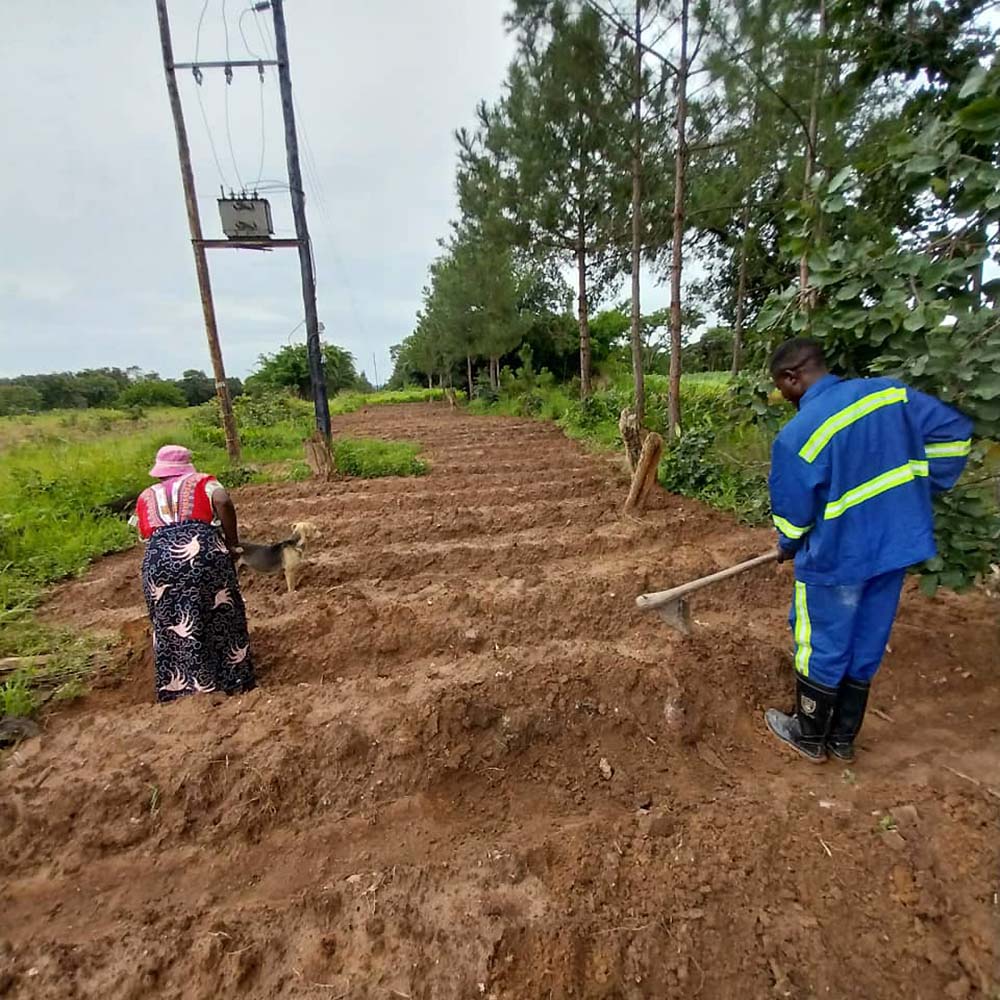
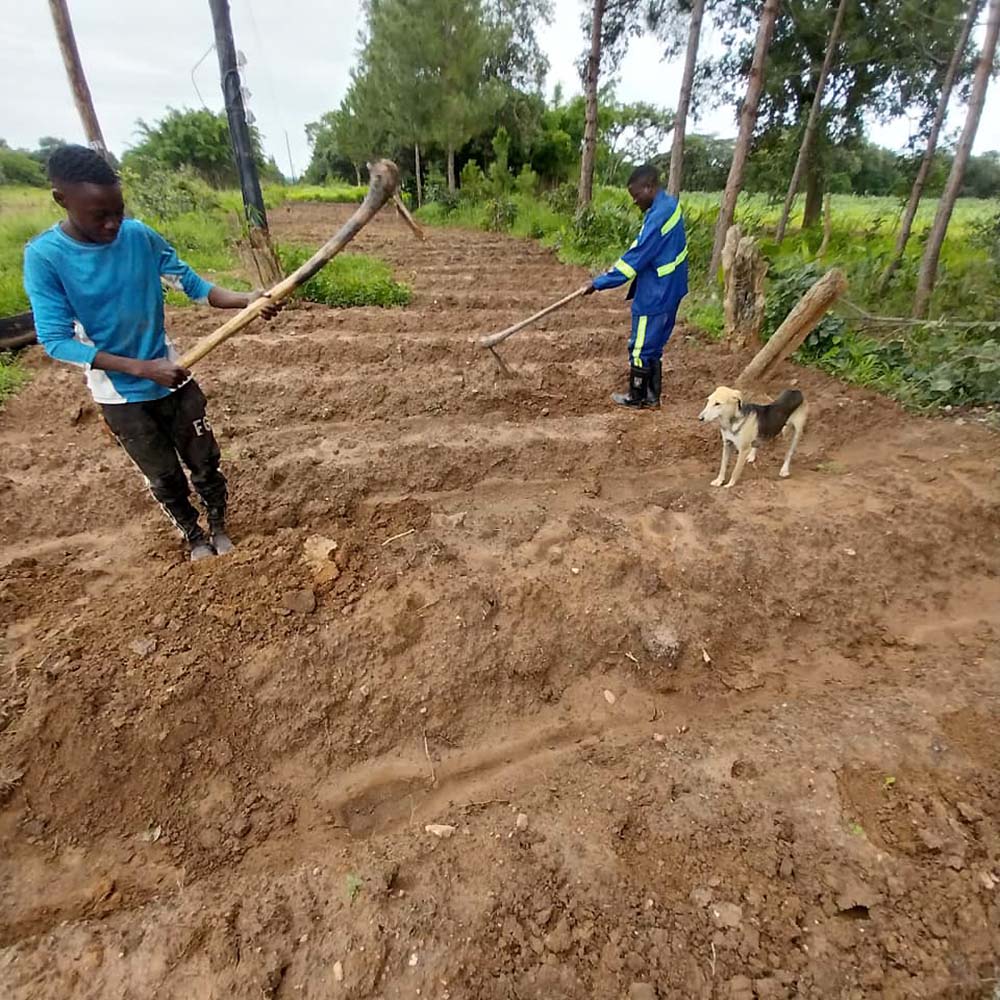
This theme showcases the beauty and resilience of pumpkin farming, from land preparation to harvest, emphasizing the sustainable farming methods that support climate resilience.
Janet’s family, carefully preparing their land, ensuring that the soil is well-aerated and optimized for healthy pumpkin growth.
Janet’s family, carefully preparing their land, ensuring that the soil is well-aerated and optimized for healthy pumpkin growth.
Dorothy in Her Field: Planting of Pumpkin Seeds
Dorothy demonstrates her technique for planting pumpkin seeds in her field, using strategically placed holes. This method helps retain water around the seedlings, ensuring consistent moisture during dry periods, which is crucial for healthy growth and high yields.
By incorporating this practice, she maximizes water retention, promoting a resilient crop in the face of changing weather patterns.
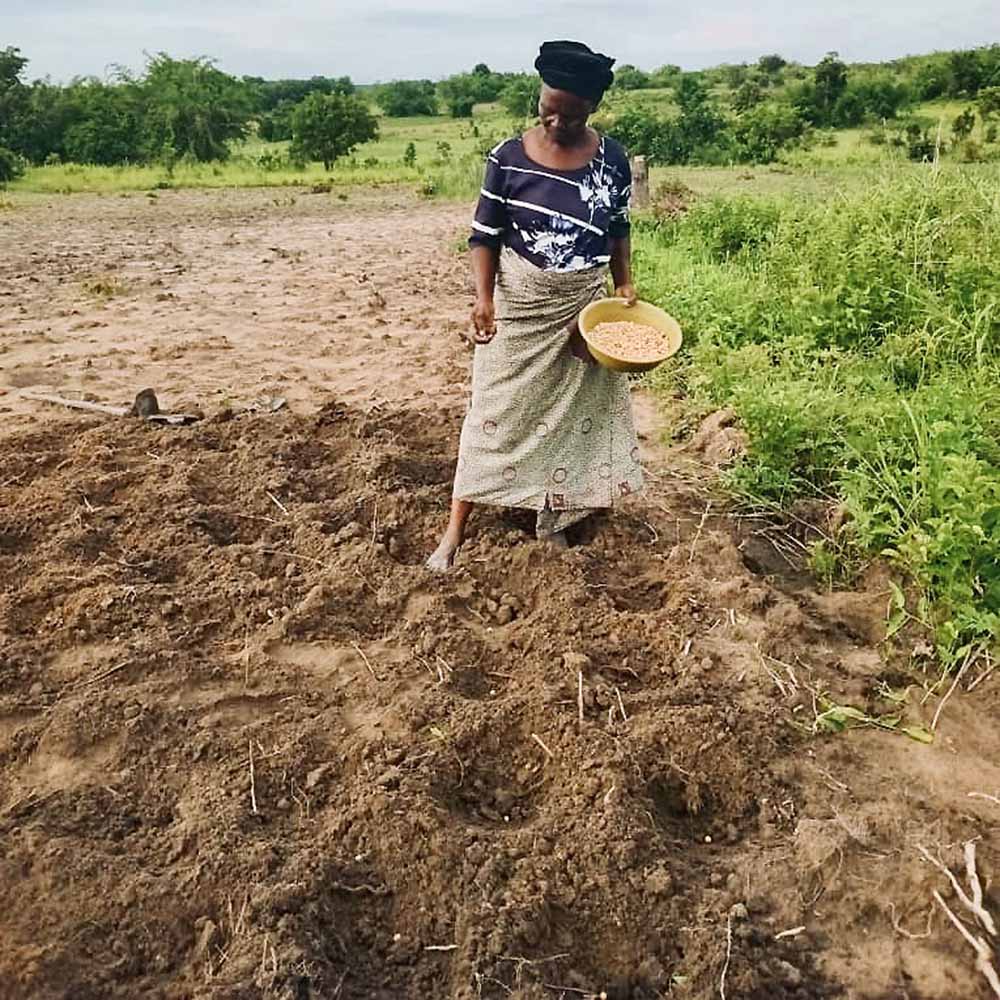
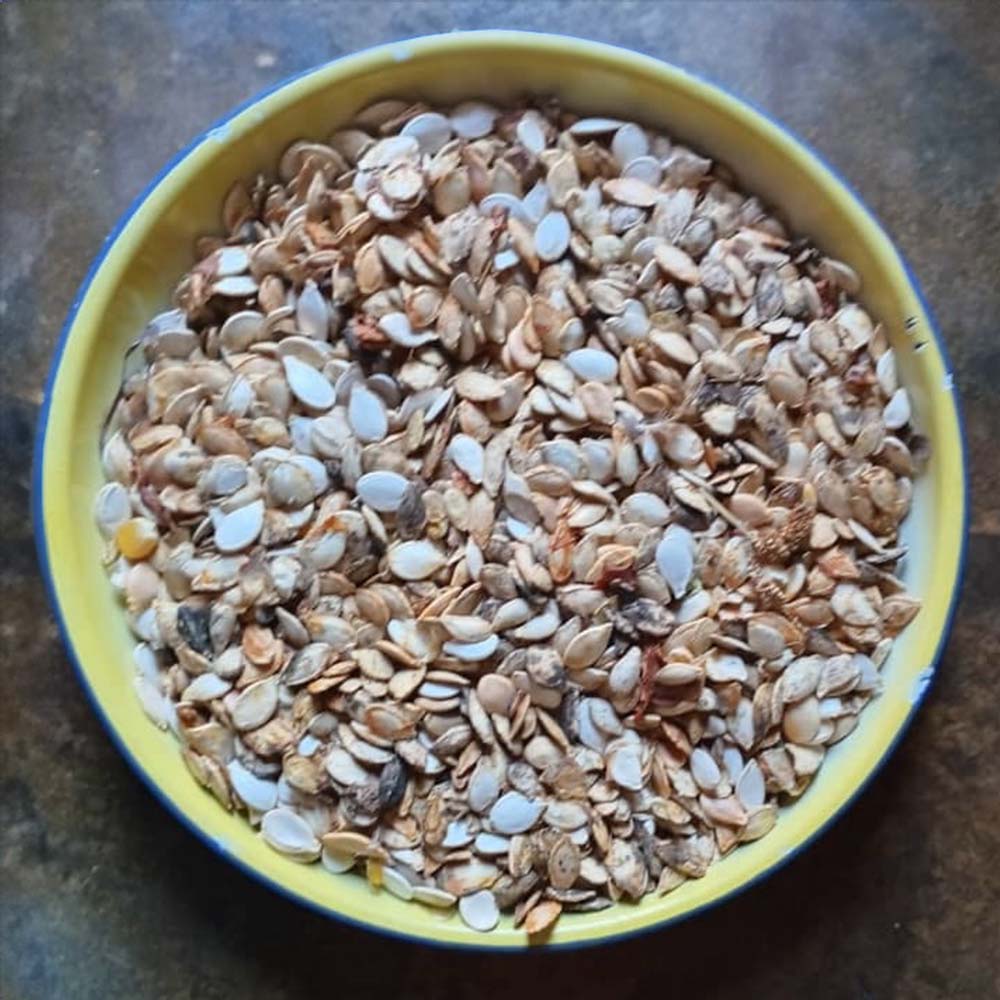
Vibrant Garden Growth
Noreen adding chicken manure to her pumpkin patch to enrich the soil with vital nutrients like nitrogen, phosphorus, and potassium, promoting healthy vines, vibrant flowers, and larger fruits. The organic matter improves soil fertility, boosts water retention, and strengthens the plants' resistance to pests and diseases.
Mulching for Success
Enhancing Pumpkin Growth Through Soil Protection
Kunda is weeding and mulching the pumpkin field using maize cob remains to conserve moisture, and regulate soil temperature.
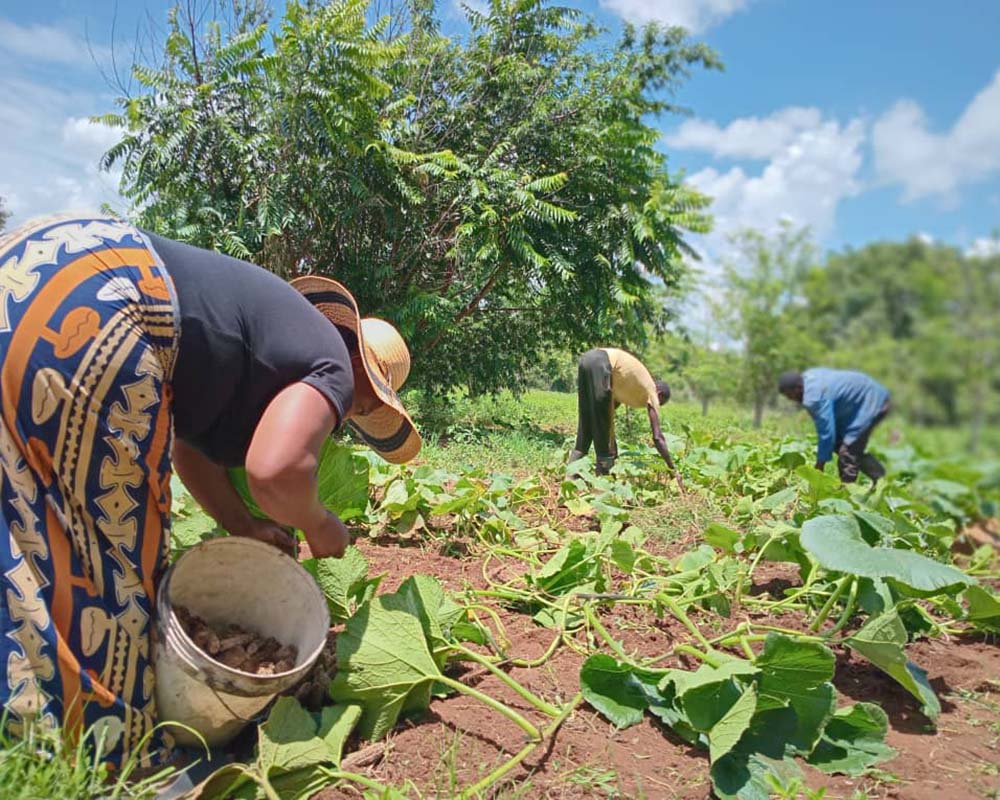
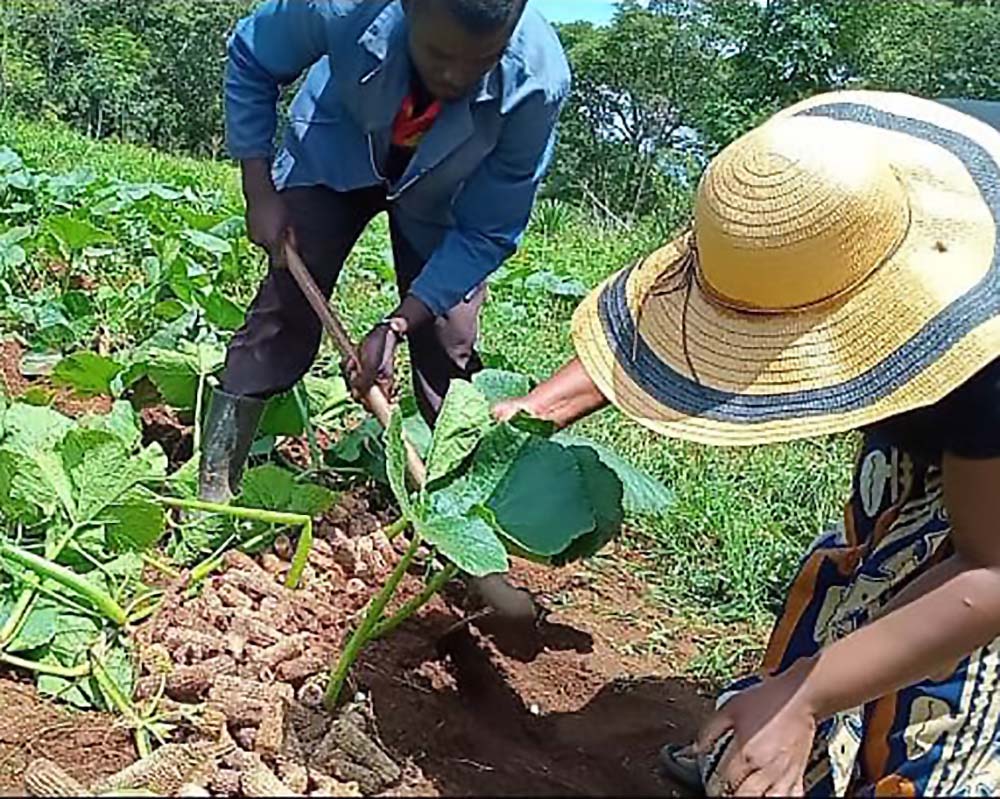
Shielding with Ash: Protecting Pumpkin Leaves from Pests
Mama Janet in the picture is sprinkling ash directly on the leaves, this is used to protect the crops from common pests while avoiding harmful chemicals. This sustainable method helps maintain plant health, enriches the soil, and promotes eco-friendly farming practices.
Thriving Green: The Growth & Vitality of Pumpkin Leaves
As shown in the picture, Janet Chongo’s farm helper, inspects the pumpkin leaves, ensuring they are healthy and thriving.

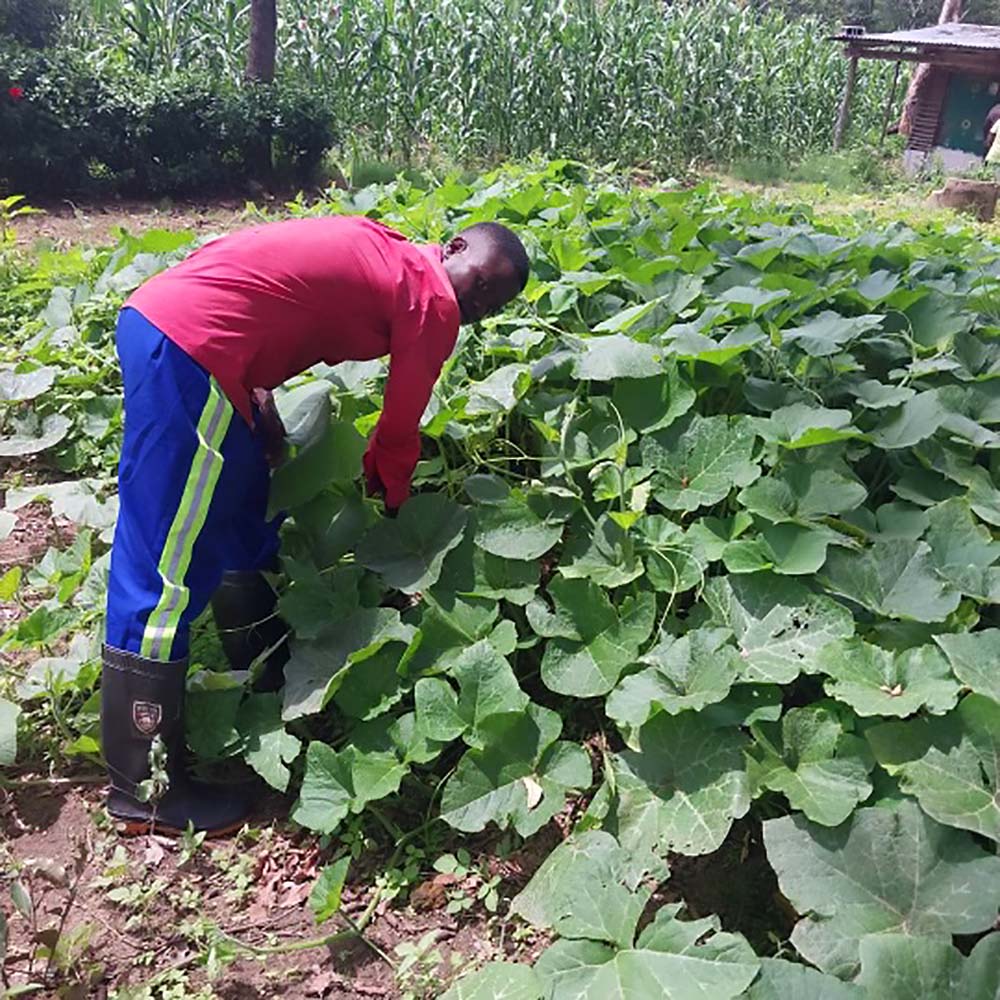
Her careful attention highlights the importance of monitoring plant health to foster robust growth and maximize yields.
Harvesting Greens
Plucking Pumpkin & Cowpea Leaves for a Nutritious Relish
Noreen is preparing to make a nutritious relish by combining fresh pumpkin leaves and cowpea leaves, showcasing the importance of local greens in Zambian cuisine. This highlights the nutritional value, sustainability, and versatility of traditional food practices.
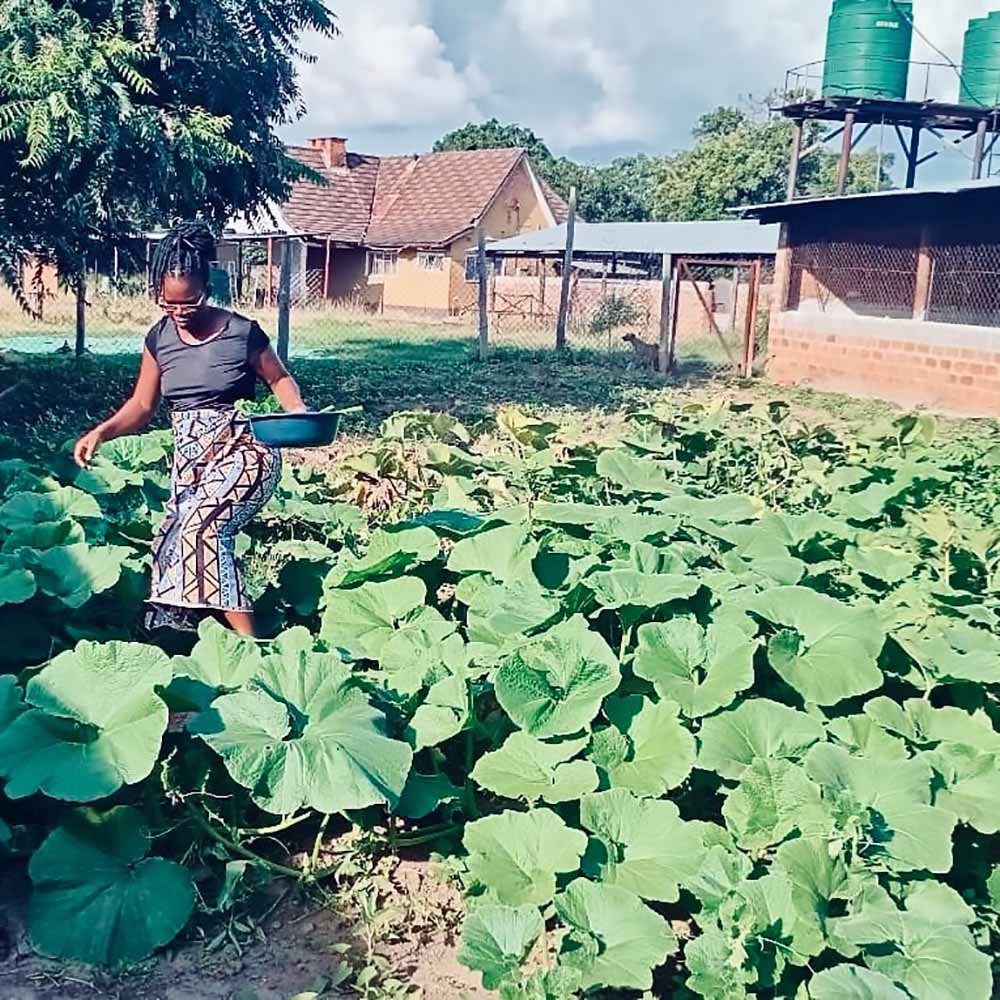
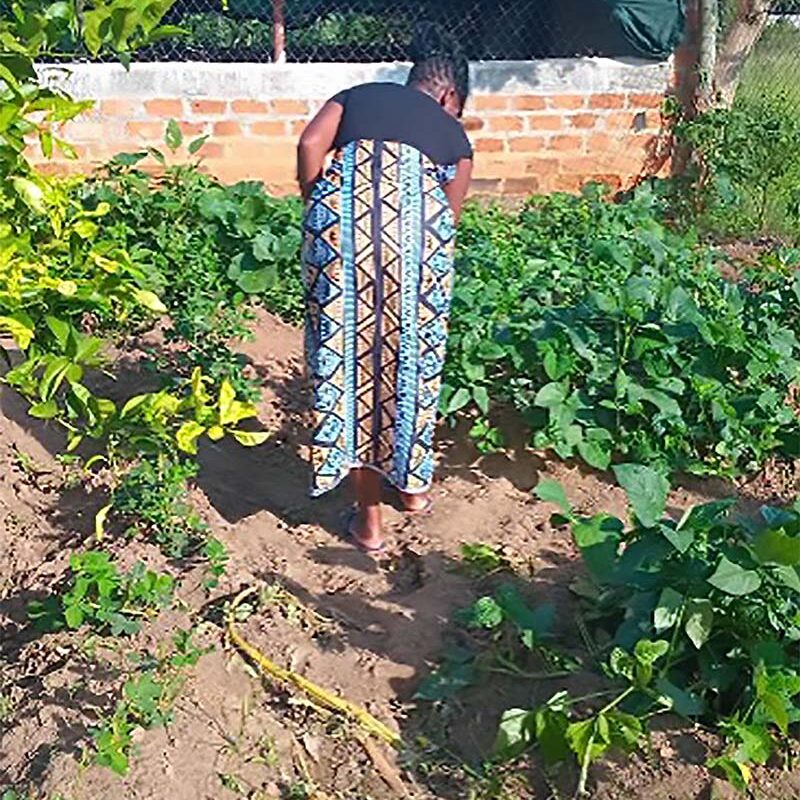
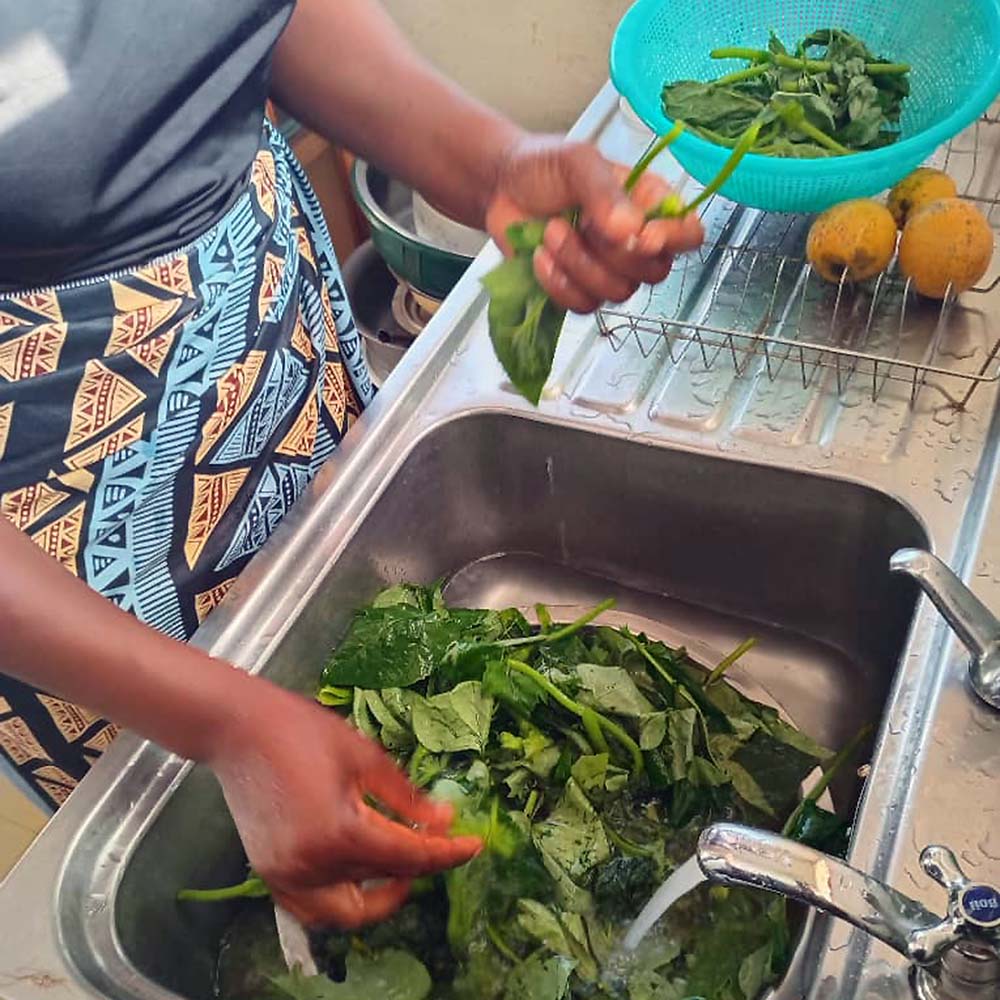
Cleaning Pumpkin & Cowpeas Leaves for a Nutritious Meal
This captures Noreen thoroughly washing pumpkin and cowpea leaves, by remove dirt and debris, removing any tough fibers or stems, and chopping the leaves into smaller pieces before cooking them into a nutritious dish.
A Taste of Tradition
Cooking Pumpkin and Cowpea Leaves to Perfection
The family enjoying a meal served with pumpkin and Amaranthus leaves, free range chicken and maize pap (Nshima).
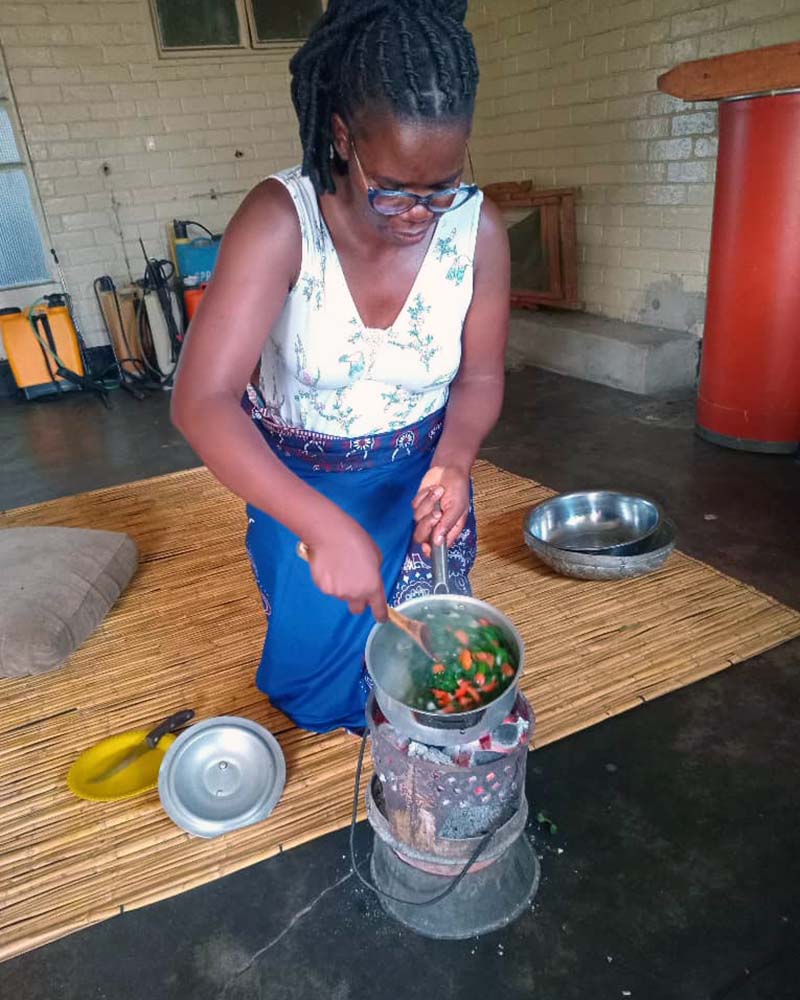
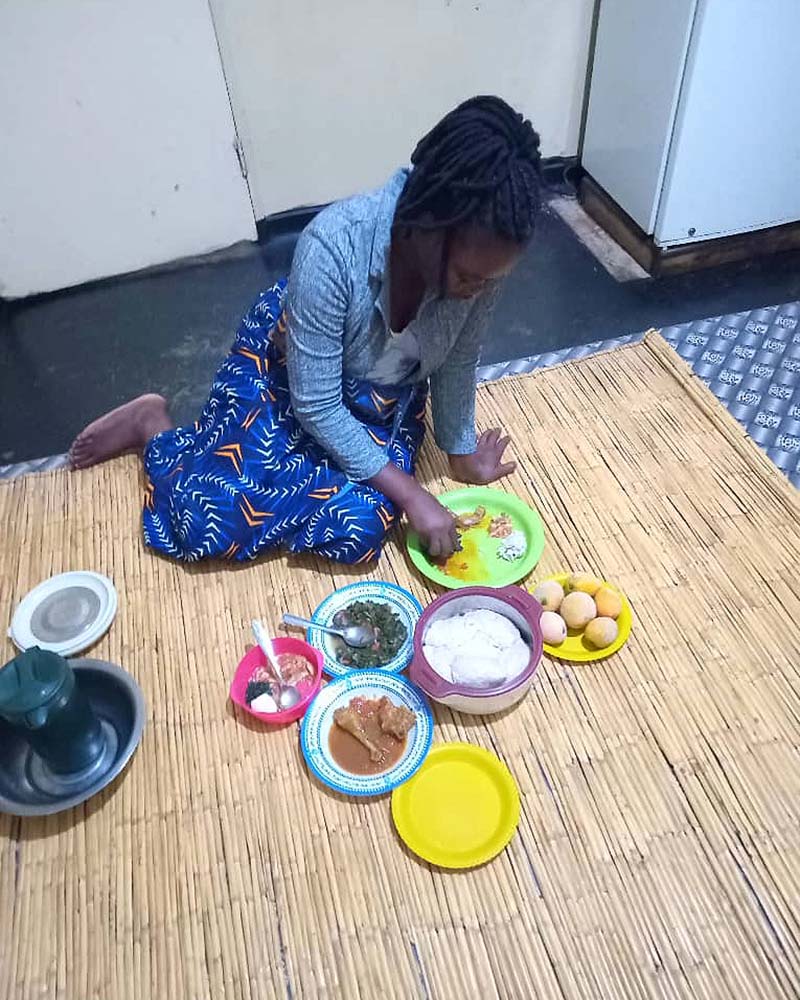
Traditional Zambian Meal
Noreen Enjoying Pumpkin Leaves mixed with Cowpea leaves with Nshima
In this scene, Noreen is seated enjoying a hearty meal that showcases the essence of traditional Zambian cuisine. The green pumpkin leaves and cowpea leaves are gently cooked with a touch of cooking oil, offering a rich and flavourful combination. Nearby, a small serving of village chicken, cooked to perfection, is placed beside the greens and Nshima.
A Taste of Tradition
Plucking Pumpkin Leaves as Part of Sustainable Food Preservation
Janet plucking matured leaves of pumpkin in her field to demonstrate the preservation method called “Mundyoli” in Zambian local language.
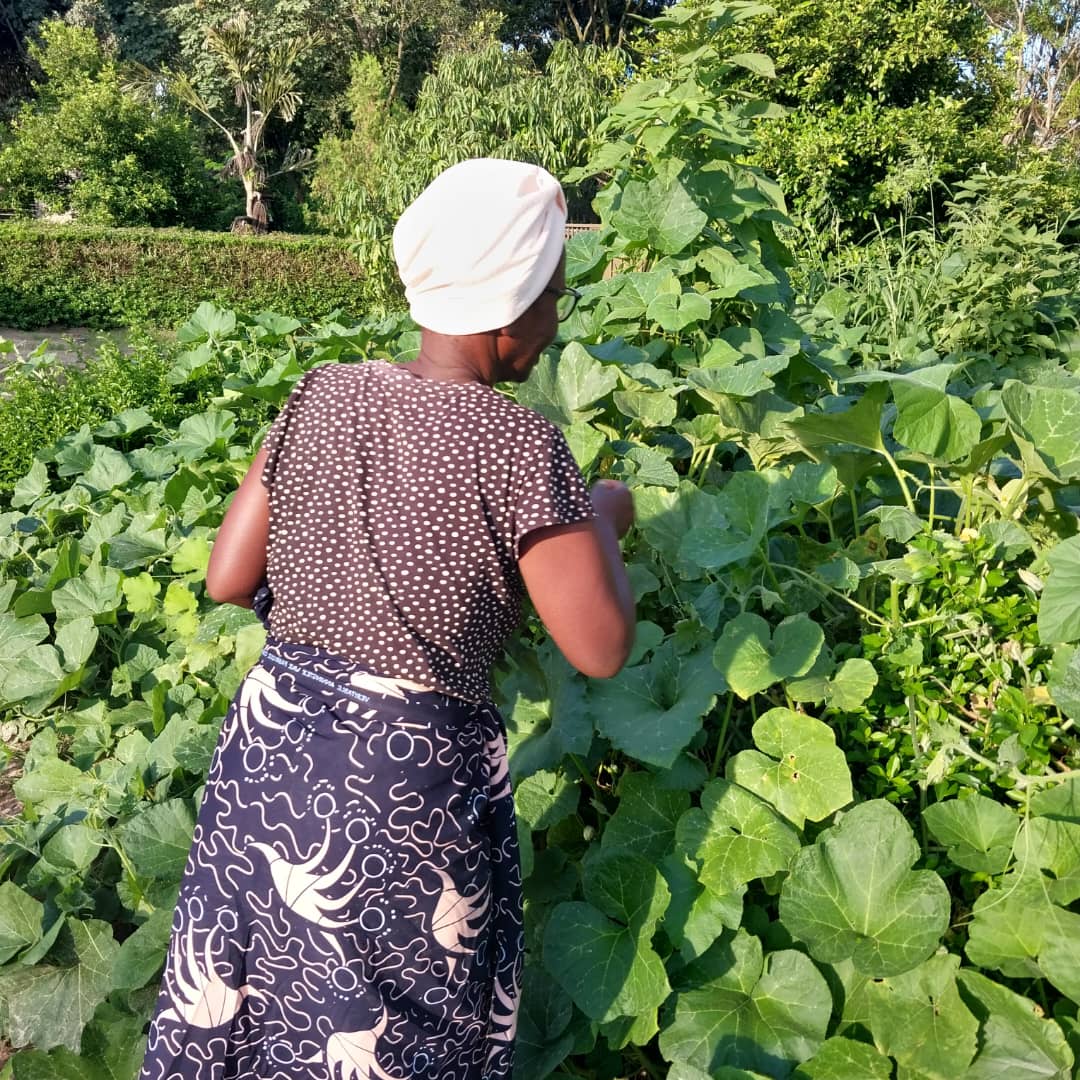
The Technique of Preserving Pumpkin Leaves
Enhancing Pumpkin Growth Through Soil Protection
As shown in the picture on the left the women are skinning the pumpkin leaves and cleaning them. They are ready to learn how to preserve the matured pumpkin leaves from mama Janet.
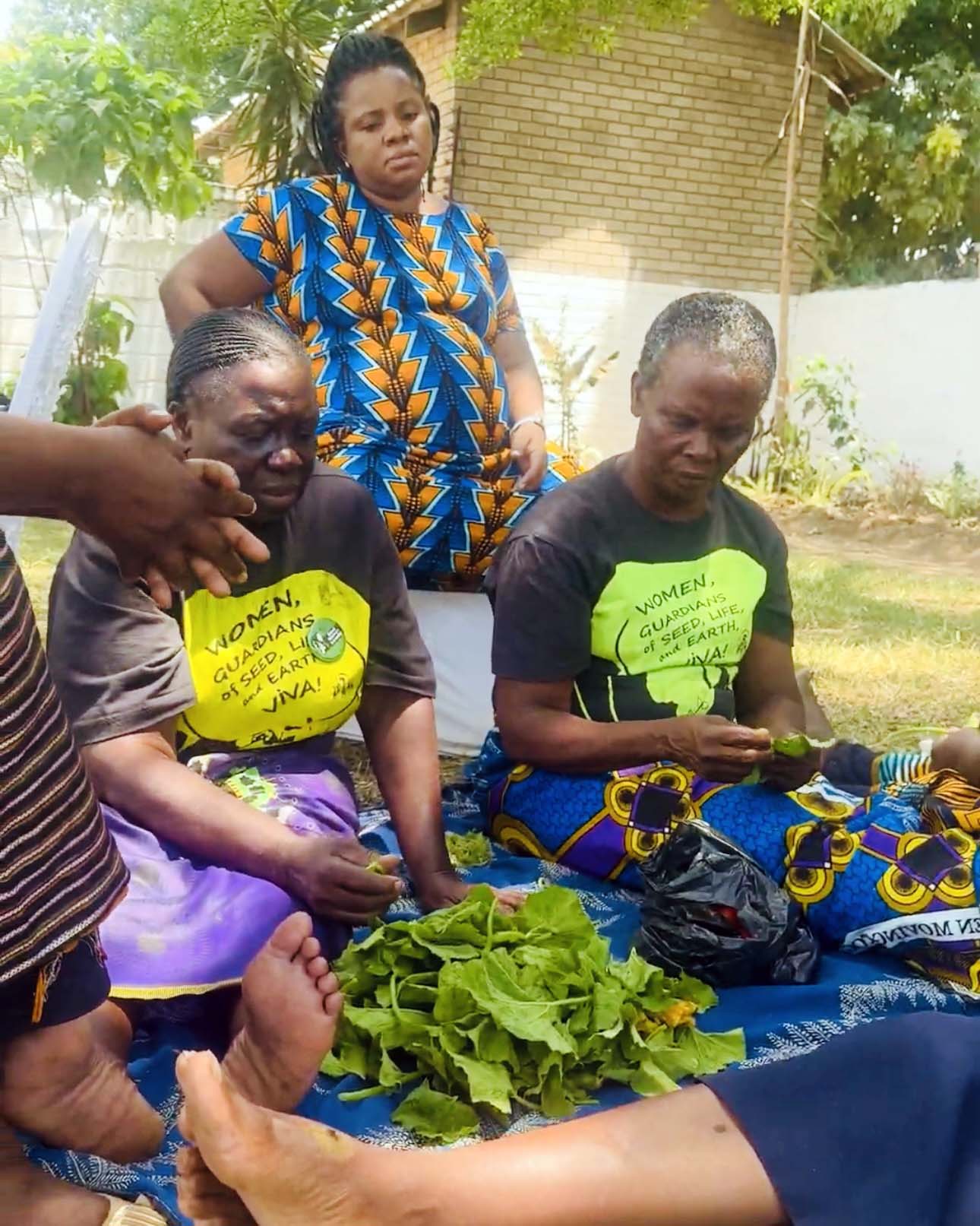
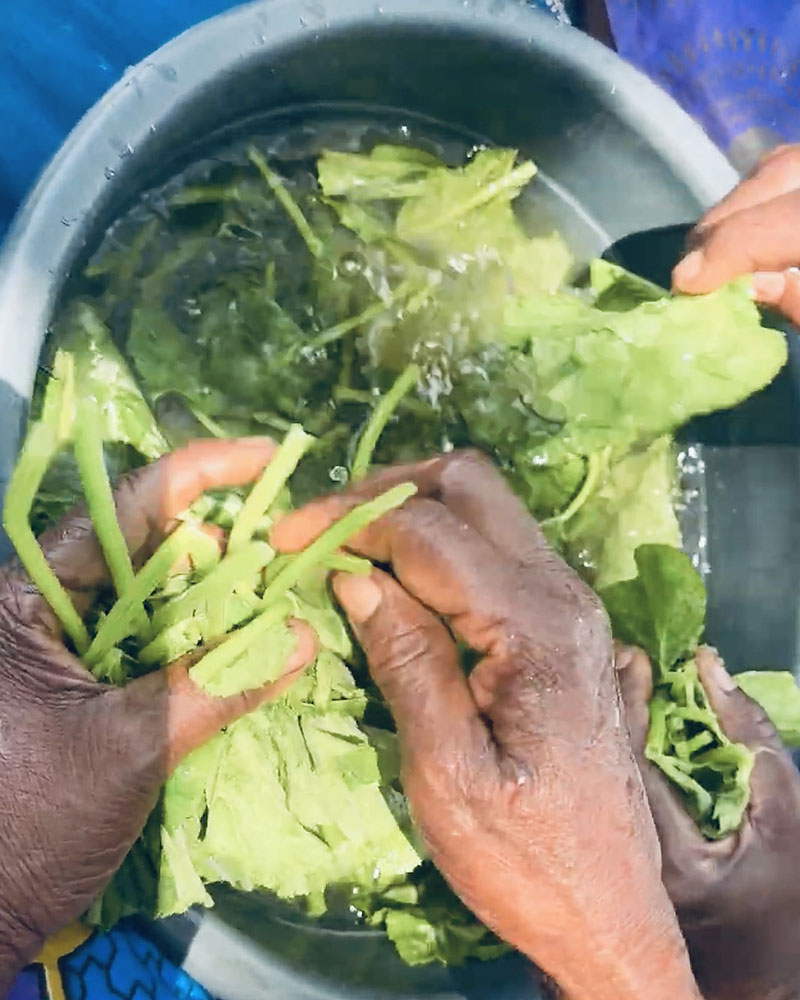
Traditional Food Preservation
After crushing the pumpkin leaves, shape them into balls for preservation. Once dried, store the balls in cartons, sacks, or traditional containers like Musekese leaves. This is often prepared with groundnuts.
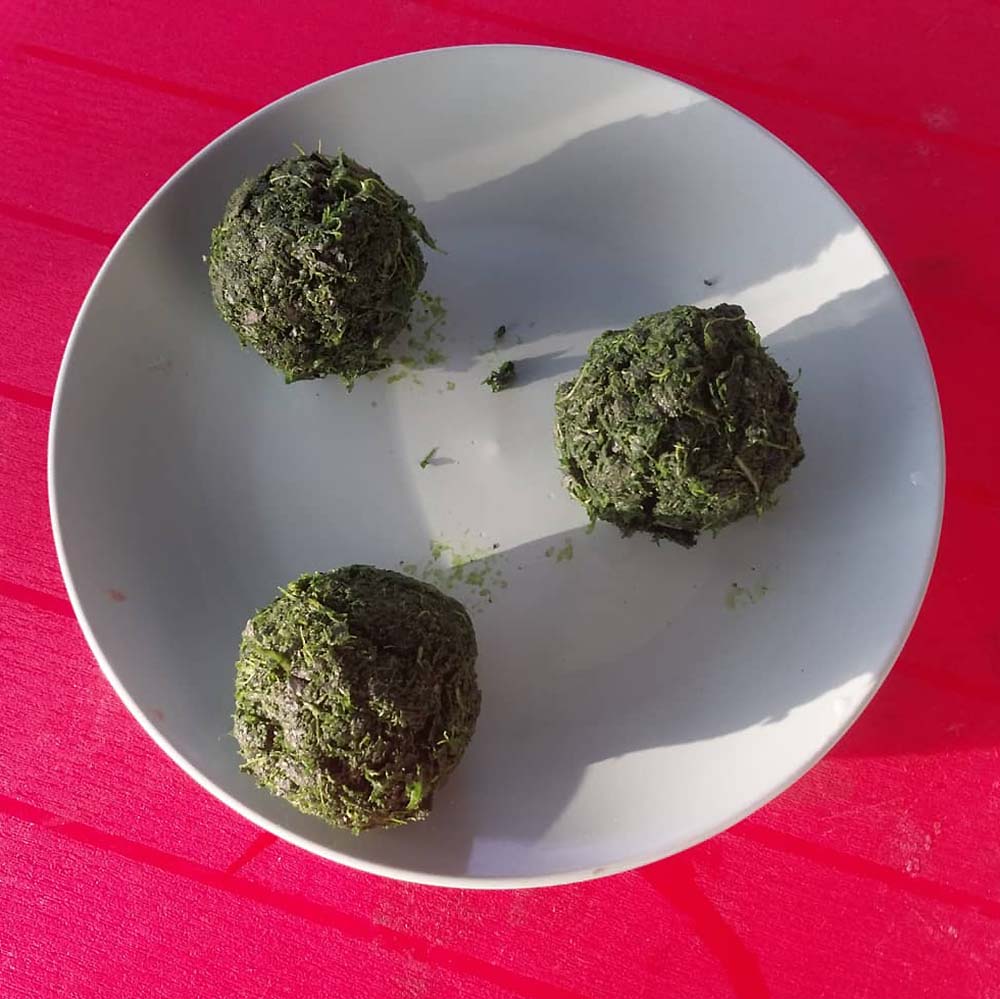
Timeless Preservation: Its Benefits
Preserving pumpkin leaves in dried balls extends their shelf life, retains nutrients, allows easy storage, and supports sustainable, economical practices.
Thank You!
Special gratitude to the NAFI farmers: Mama Janet, Mama Noreen, Mama Theresa Mutaka, Mama Dorothy Mugala, Mama Anthea Mulenga, Mama Kunda Nachizya
For sharing their journey with us and thank you to NAFI lead –Mama Grace Tepula, In-Country Nutritionist Sarah Kutotntonknaya, and Ofure for the guidance and valuable advice.
For sharing their journey with us and thank you to NAFI lead –Mama Grace Tepula, In-Country Nutritionist Sarah Kutotntonknaya, and Ofure for the guidance and valuable advice.
